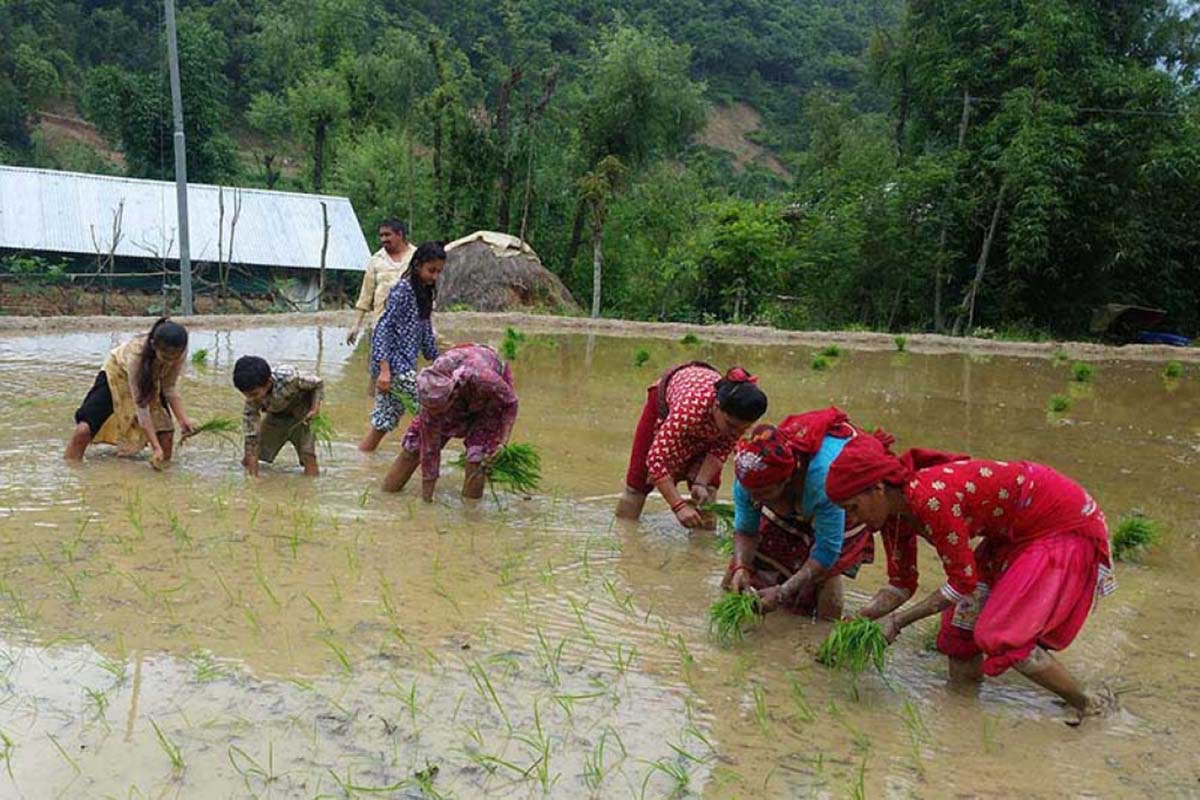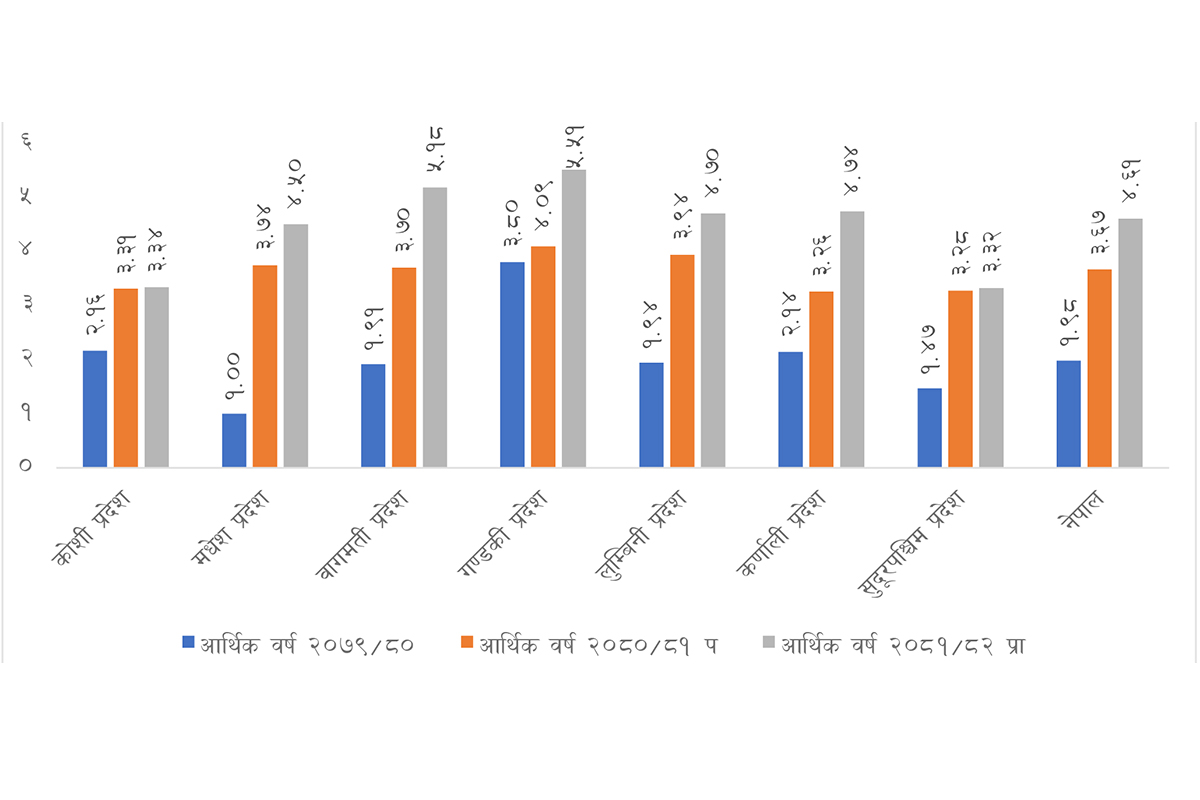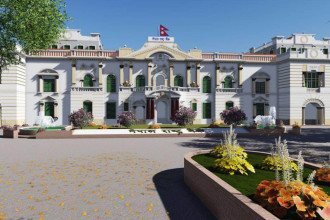
KATHMANDU: National Statistics Office (NSO) has released a press note with the preliminary estimates of provincial gross domestic product (GDP) for the fiscal year 2024/25. The report provides details on the economic size of each province, their contributions to the national economy, growth rates at consumer prices, and per capita GDP.

The national annual GDP at consumer prices is estimated at approximately Rs 6,107 billion. Bagmati Province is expected to account for the largest share at 36.52%, followed by Koshi Province (15.90%), Lumbini Province (14.23%), Madhesh Province (13.16%), Gandaki Province (8.98%), Sudurpashchim Province (7.03%) and Karnali Province (4.19%). Compared with revised estimates for fiscal year 2023/24, the contributions from Koshi, Gandaki, Lumbini, Karnali and Sudurpashchim have slightly decreased, while those from Madhesh and Bagmati have seen a marginal rise.
In terms of economic growth at consumer prices, Gandaki Province is estimated to record the highest growth at 5.51%, followed by Bagmati Province at 5.18%, with Sudurpashchim Province projecting the lowest growth at 3.32%. The national GDP growth rate at constant prices is estimated at 4.61%. Gandaki, Bagmati, Karnali and Lumbini are forecast to grow above the national average, while the remaining provinces are expected to record lower growth. A general upward trend is noted from fiscal year 2022/23 to fiscal year 2024/25, although Koshi and Sudurpashchim have shown only a negligible increase from fiscal year 2023/24 to 2024/25.
Preliminary per capita GDP estimates indicate that Bagmati Province is expected to have the highest per capita GDP, at $2,602, while Madhesh Province is projected to record the lowest, at $932. Other estimates are $1,619 for Gandaki, $1,401 for Koshi, $1,201 for Lumbini, $1,153 for Sudurpashchim and $1,089 for Karnali. The national average per capita GDP stands at approximately $1,496, with all provinces except Bagmati and Gandaki recording figures below the national average.
The NSO began estimating provincial-level GDP in fiscal year 2018/19 using a production-based top-down approach. In this method, the national gross value added (GVA) for each industrial sector is disaggregated to the provincial level using appropriate indicators. National GDP estimates follow the System of National Accounts, 2008 (SNA 2008), and economic activities are classified according to the International Standard Industrial Classification (ISIC Revision 4). Out of 21 industrial sectors, 20 are grouped into 18 categories for both national and provincial GVA estimation.
The press note also details industrial classification and provincial GVA. In all provinces except Bagmati, the agriculture sector contributes the most to GVA. In Bagmati Province, wholesale and retail trade is the largest contributor, with real estate activities ranking second. In Koshi and Madhesh provinces the trade sector is the second largest, while public administration and defence ranks second in Gandaki, Lumbini and Sudurpashchim provinces. Administrative and support service activities generally contribute the least to GDP in most provinces, except for water supply and waste management in Bagmati and mining and quarrying in Madhesh and Karnali. For fiscal year 2024/25, the growth rate of GVA is positive in all sectors nationally. The electricity and gas sector is estimated to record the highest GVA growth at 13.82%, although in Lumbini and Karnali transport and storage is projected to grow the most. The lowest growth rates vary by province, with mining and quarrying recording the lowest growth in Bagmati, Lumbini and Karnali; water supply, sewerage and waste management in Koshi and Sudurpashchim; education in Madhesh; and public administration and defence in Gandaki.
READ ALSO:




-1765865409.jpeg)
-1765867196.jpeg)
